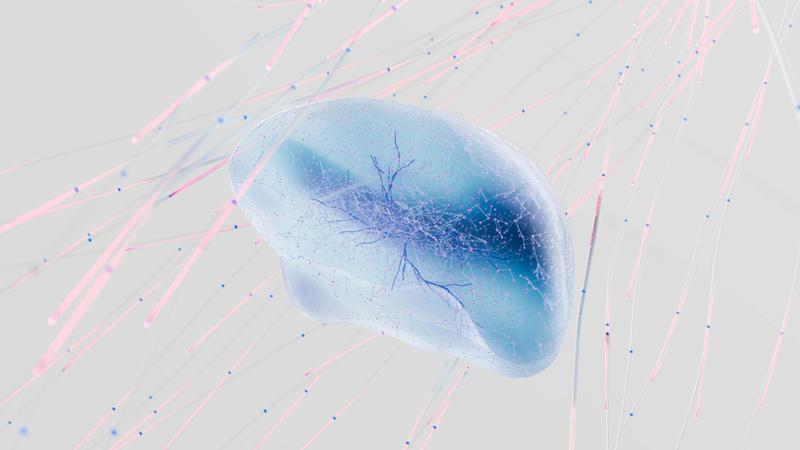You Can’t Change Someone Who Doesn’t Choose to Grow

You know, a question I get all the time sounds something like this: “I think your program would be perfect for my brother… or my sister… or my friend. Can I gift it to them?” And I always smile, because I get it. You see someone you care about stuck in a loop—stressed, reactive, repeating the same patterns—and you just want them to feel the relief or clarity you’ve found. But here’s the thing… You can’t train someone who hasn’t chosen to train.
Today we’re talking about something that can feel both frustrating and freeing: the reality that real growth—inner growth—is always self-chosen. Not forced. Not gifted. Not convinced into being. It has to come from a personal decision to train the inner world.
The Well-Meaning Fixer
I’ve worked with a lot of people who start their own transformation, start to see results, and instantly think of someone else who “needs this.” They mean well. They’re coming from care. But underneath, there’s a subtle emotional pattern running: control disguised as love. They’re uncomfortable watching someone struggle. Their nervous system wants relief—so it reaches for control. That might look like trying to fix a partner’s mood, pushing a friend toward self-improvement, or buying someone a program and saying, “Just try it, you’ll love it.” The truth is, what’s actually being trained in that moment isn’t compassion—it’s anxiety. The emotion of “I can’t be okay unless you change.” And when that emotion drives the action, no matter how noble it looks, it reinforces a pattern that says, “My peace depends on someone else.”

Why It Doesn’t Work
If someone hasn’t chosen to train, their inner lens is still shaped by the same emotional pattern that’s running their life. So when you give them tools or talk about what’s working for you, it doesn’t land. The system isn’t ready to receive it. Even if you hand someone the perfect process, if their inner world is still wired for frustration or resistance, they can’t integrate it. It’s like trying to plant a seed in frozen soil. The soil has to thaw first. That’s what choosing to train does—it warms the ground. Until that happens, you can’t do it for them.
When Helping Becomes Managing
There’s another pattern that often hides underneath the urge to help—the rescuer. It’s the part of us that feels responsible for everyone else’s emotional state. It wants to fix, smooth things over, keep the peace. But what emotional state does that actually train? Usually anxiety. Tension. Hyper-vigilance. You end up scanning constantly—“Is everyone okay?”—and that teaches your system to stay on alert. Ironically, that same tension can feed the very dynamic you’re trying to solve. Because if you’re anxious about someone else’s discomfort, you’re reinforcing the same emotion they’re trying to escape. The training instead is to stay in command of your own state— even when others are reactive, resistant, or shut down. That’s how real influence works. Not by managing people, but by mastering yourself.

What Real Choice Looks Like
When someone truly chooses to train, it’s obvious. You can feel it. They’re not doing it to please anyone, and not because life forced them into a corner. They’re doing it because they’ve decided that staying the same costs more than changing. And when that decision is made, something inside reorganizes. The nervous system becomes available for new emotions— curiosity, courage, commitment. That’s when growth sticks. You can’t install that from the outside. You can only model it. The most powerful way to inspire change in someone else is to live in the emotional state they haven’t yet trained. When you embody calm around someone who’s reactive— their nervous system feels your steadiness. Sometimes that quiet influence does more than any argument or advice ever could.
The Biology of Influence
Let’s talk about why that works. We have specialized brain cells called mirror neurons. They activate when we observe someone else’s emotional or physical state. That’s why you flinch when someone stubs their toe, or why a genuine smile can make you feel warm inside. When your emotional state shifts, those around you feel it. Not because you said something, but because your nervous system is literally broadcasting it. So if you’re training peace or steadiness, people around you start picking up on that frequency. They may not know why they feel different around you, but they sense something. And that’s the real invitation— not convincing, not selling, just embodying.

When You Want It More Than They Do
Sometimes the hardest thing is watching someone you love choose to stay stuck. You can see what’s possible for them. You know what would help. And it’s tempting to push. But that’s when your own training gets tested. Because the moment you start wanting it more than they do, you’ve left your lane. You’re trying to manage their direction instead of your own. So here’s the reframe: Instead of trying to change them, use that moment to deepen your own training. When they’re resistant, practice calm. When they shut down, train compassion without attachment. When they spiral, train steadiness. You’re still influencing them— but now from integrity, not control. And maybe one day, when they’re ready, they’ll ask, “What changed in you?” That’s your moment.
The Choice Point
Every transformation starts with one internal decision: “I’m done training the same emotional state.” That’s it. It’s not a dramatic moment. It’s not a breakdown or an awakening. It’s just a clear, quiet choice to live differently. And until someone makes that choice, nothing sticks. That’s why you can’t gift transformation. You can gift books, courses, or information— but not the choice to train. Because the work itself is uncomfortable. It requires confronting the emotional states you’ve practiced for years. It demands consistency when your system wants comfort. You can’t do that for someone else. They have to decide their own “why.”
Training vs. Hoping
There’s a big difference between hoping someone will change and training your own state in relation to them. Hope keeps you waiting. Training keeps you growing. So if you’ve been hoping your partner, your friend, or your family member will finally “get it,” check what emotion that hope is anchored in. Is it frustration? Disappointment? Fear? If so, that’s what you’re practicing. That’s the emotional muscle you’re strengthening every time you replay the story in your head. What would it look like to redirect that energy? Maybe into gratitude for your own progress. Or focus on living your principles more fully. Because the moment you return to your own training, you step back into alignment.

Modeling Over Managing
Think about the people who’ve influenced you most. They probably didn’t lecture you. They didn’t chase you down to change. They just lived differently—steady, grounded, present. And something in you said, “I want that.” That’s the model. When you live in alignment, your nervous system becomes a mirror for what’s possible. You don’t need to convince anyone. You just need to train so deeply that your state speaks louder than your words. That’s how leadership works. Not about power or persuasion— but emotional command.
The Gift of Allowing
Allowing doesn’t mean apathy. It means trusting the process of another person’s timeline. You can love someone deeply and still honor that they’re not ready. You can hold your own alignment even as they struggle. Because every system has its own pace of evolution. Yours included. And when you truly accept that, the emotional charge dissolves. You stop pushing. You stop managing. You start leading. That’s when peace becomes your new normal.
Reflection Practice
So here’s a reflection for you— one that brings this full circle: What emotional state are you practicing—over and over—without realizing it? And when you think about someone you wish would grow, what emotional state are you reinforcing in yourself as you think of them? If it’s tension, frustration, or worry, that’s the next place to train. Because the only person you can truly lead is you. And when you do, the ripple effect is limitless.
If you’re ready to stop managing symptoms and start training a steady, resilient inner state— I’ve built a system for that. It integrates the mind, emotions, and nervous system, so you don’t just understand your patterns— you actually shift them.
I also share weekly practices over on Instagram @mikewangcoaching, and if you want more depth, join the newsletter here. Keep training the inner state that aligns with who you’re becoming.
